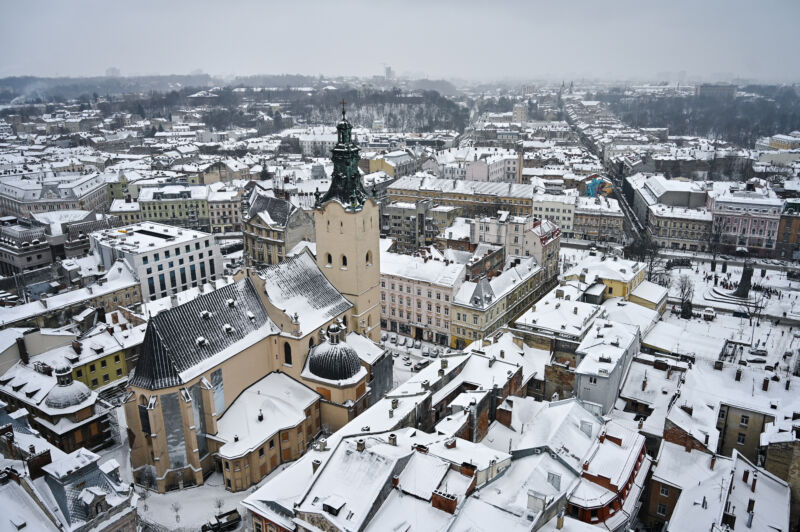
Enlarge / The cityscape from the tower of the Lviv Town Hall in winter. (credit: Anastasiia Smolienko / Ukrinform/Future Publishing via Getty Images)
As Russia has tested every form of attack on Ukraine’s civilians over the past decade, both digital and physical, it’s often used winter as one of its weapons—launching cyberattacks on electric utilities to trigger December blackouts and ruthlessly bombing heating infrastructure. Now it appears Russia-based hackers last January tried yet another approach to leave Ukrainians in the cold: a specimen of malicious software that, for the first time, allowed hackers to reach directly into a Ukrainian heating utility, switching off heat and hot water to hundreds of buildings in the midst of a winter freeze.
Industrial cybersecurity firm Dragos on Tuesday revealed a newly discovered sample of Russia-linked malware that it believes was used in a cyberattack in late January to target a heating utility in Lviv, Ukraine, disabling service to 600 buildings for around 48 hours. The attack, in which the malware altered temperature readings to trick control systems into cooling the hot water running through buildings’ pipes, marks the first confirmed case in which hackers have directly sabotaged a heating utility.

Dragos’ report on the malware notes that the attack occurred at a moment when Lviv was experiencing its typical January freeze, close to the coldest time of the year in the region, and that “the civilian population had to endure sub-zero [Celsius] temperatures.” As Dragos analyst Kyle O’Meara puts it more bluntly: “It’s a shitty thing for someone to turn off your heat in the middle of winter.”




















+ There are no comments
Add yours